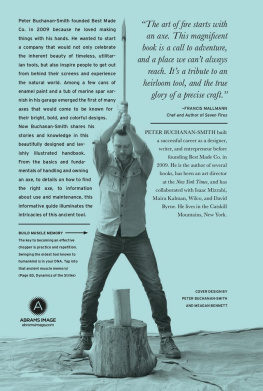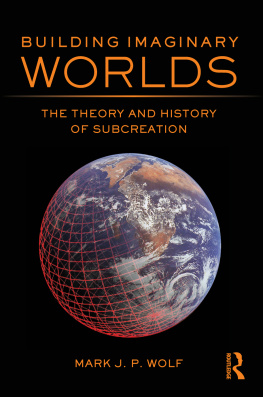Mark Buchanan - Nexus: Small Worlds and the Groundbreaking Theory of Networks
Here you can read online Mark Buchanan - Nexus: Small Worlds and the Groundbreaking Theory of Networks full text of the book (entire story) in english for free. Download pdf and epub, get meaning, cover and reviews about this ebook. year: 2003, publisher: W. W. Norton & Company, genre: Politics. Description of the work, (preface) as well as reviews are available. Best literature library LitArk.com created for fans of good reading and offers a wide selection of genres:
Romance novel
Science fiction
Adventure
Detective
Science
History
Home and family
Prose
Art
Politics
Computer
Non-fiction
Religion
Business
Children
Humor
Choose a favorite category and find really read worthwhile books. Enjoy immersion in the world of imagination, feel the emotions of the characters or learn something new for yourself, make an fascinating discovery.
- Book:Nexus: Small Worlds and the Groundbreaking Theory of Networks
- Author:
- Publisher:W. W. Norton & Company
- Genre:
- Year:2003
- Rating:4 / 5
- Favourites:Add to favourites
- Your mark:
- 80
- 1
- 2
- 3
- 4
- 5
Nexus: Small Worlds and the Groundbreaking Theory of Networks: summary, description and annotation
We offer to read an annotation, description, summary or preface (depends on what the author of the book "Nexus: Small Worlds and the Groundbreaking Theory of Networks" wrote himself). If you haven't found the necessary information about the book — write in the comments, we will try to find it.
Nexus: Small Worlds and the Groundbreaking Theory of Networks — read online for free the complete book (whole text) full work
Below is the text of the book, divided by pages. System saving the place of the last page read, allows you to conveniently read the book "Nexus: Small Worlds and the Groundbreaking Theory of Networks" online for free, without having to search again every time where you left off. Put a bookmark, and you can go to the page where you finished reading at any time.
Font size:
Interval:
Bookmark:
Small Worlds and the Groundbreaking Science of Networks

W. W. NORTON & COMPANY
New York London
Copyright 2002 by Mark Buchanan
All rights reserved
First published as a Norton 2003
For information about permission to reproduce selections from this book, write to Permissions, W. W. Norton & Company, Inc., 500 Fifth Avenue, New York, NY 10110
Library of Congress Cataloging-in-Publication Data
Buchanan, Mark.
Nexus: small worlds and the groundbreaking science of networks / Mark Buchanan.1st ed.
p. cm.
Includes bibliographical references.
ISBN: 978-0-393-07608-0
1. Causality (Physics) 2. Pattern formation (Physical sciences) 3. Social networks. I. Title.
QC6.4.C3 B827 2002
530'.01dc21
2002000518
W. W. Norton & Company, Inc., 500 Fifth Avenue, New York, N.Y. 10110
www.wwnorton.com
W. W. Norton & Company Ltd., Castle House, 75/76 Wells Street, London W1T 3QT
To Kate
I am grateful to the many scientists who have generously supplied me with figures, data, or useful bits of information crucial to the writing of this book. My thanks go out especially to Duncan Watts, Steve Strogatz, Thomas Blass, Mark Granovetter, Albert-Lszl Barabsi, Hawoong Jeong, Jack Scannell, Harry Swinney, Neboja Nakcenovc, Lus Amaral, Gene Stanley, Peter Yodzis, Gennady Gorelik, John Potterat, Alden Klovdahl, William Darrow, Alessandro Vespignani, Paul Meakin, Jean-Philippe Bouchaud, Marc Mzard, Hal Cheswick, Daniel Goldman, David Lavigne, Valeri Makarov, Manuel Velarde, Bill Krantz, Nigel Gilbert, Klaus Troitzsch, Brad Werner, and Mark Kessler. No one should suppose that any of these researchers agrees with everything or even most of what I have written here. Any errors or misconceptions that may have slipped into the text are mine alone.
I would like also to thank my agent Kerry Nugent Wells and my editor Angela von der Lippe at W. W. Norton for their faith in the value of this project and their great help in improving the book. Most importantly, infinite thanks go to my wife Kate for her unflagging support and encouragement during the many months of writing.
M ARK B UCHANAN
Notre Dame de Courson
November 2001
Science is built up with facts, as a house is with stones. But a collection of facts is no more a science than a heap of stones is a house.
Henri Poincar
F ORTY-ONE YEARS AGO , at the height of the Cold War, the philosopher Karl Popper published a short anti-Marxist volume entitled The Poverty of Historicism. In using the term historicism , Popper meant to refer to any system of ideas that claimed, like the philosophy of Karl Marx, that the unfolding of human history can be predicted in advance. Marx had famously asserted that communism was the worlds social and political destiny. And Popper, possessor of a lifelong revulsion toward communism, aimed to take the wind out of Marxs claim.
Poppers argument was as clever as it was simple. To begin with, he said, we all accept that the growth of human knowledge has an influence on the course of history. In the 1930s scientists came to understand the basic physics of the atomic nucleus, and mankind soon had to face up to the disconcerting power of nuclear weapons. Changes in knowledge clearly have an effect on history. It is also true, said Popper, that we cannot predict how our knowledge will grow, for learning means discovering something new and unexpected. If we could predict future discoveries now, we would know about them already.
So, if changes in knowledge influence the course of history, and we cannot foresee such changes, history must be beyond prediction. The belief in historical destiny, as Popper put it, is sheer superstition. There can be no prediction of the course of human history by scientific or any other rational methods.
Whether this argument makes sense or not, most of us would accept its conclusion. Humanity is an immensely complicated network of more than six billion individuals, and in view of the formidable complexity of even a single human being, it is no surprise that our collective future cannot be foreseen. There are certainly no equations for history. Indeed, while the physical sciences reveal numerous regularities that can be captured in immutable scientific laws, this does not seem to be the case in the social world where emotional and unpredictable humans take center stage. Lump together all the fields that deal with the lives and actions of peoplefrom history and economics to political science and psychologyand it is impossible to find a single topic that can be wrapped up with a few simple laws like those of physics or chemistry.
Is it conceivable that there could be mathematical laws for the human world? Many people find it distinctly unsettling even to consider the possibility. As individuals, we prize our freedom to do and think what we will. Mathematics, by contrast, is thought of as being rigid and restrictive, its inflexible symbols suited perhaps to the description of mindless and soulless matter, but certainly not to the lives of living, breathing humans.
One of the messages of this book, however, is that it may be possible to discover mathematical laws and meaningful patterns in the human world. The purpose of science, as the late social and political scientist Herbert Simon once put it, is to find meaningful simplicity in the midst of disorderly complexity. And over the past five years, sociologists, physicists, biologists, and other scientists have turned up numerous unexpected connections between the workings of the human world and the functioning of other seemingly unrelated things: from the living cell and the global ecosystem to the Internet and the human brain. This is not to say that we lack free will, or that Karl Popper was wrong and history can be predicted. But it does suggest that many of the inherent complexities of human society actually have little to do with the complex psychology of humans; indeed, similar patterns turn up in many other settings where conscious beings play no role at all.
Surprisingly, these discoveries were kicked off originally by studies in pure mathematics. Nevertheless, they are now offering insights into long-standing problems in diverse fields of science and into some of the oldest puzzles of human society.
SMALL WORLDS
ONE DAY DURING the winter of 1998, mathematicians Duncan Watts and Steve Strogatz of Cornell University in Ithaca, New York, sat down at a table in Strogatzs office and drew a series of dots on a piece of paper. They then connected some of the dots together with lines to produce a simple pattern that mathematicians refer to as a graph . This may not sound like serious mathematics; it certainly does not sound like a profitable way to go about making discoveries. But as the two mathematicians were soon to learn, they had connected their dots in a peculiar way that no mathematician had ever envisioned. In so doing, they had stumbled over a graph of an unprecedented and fascinating kind.
Watts and Strogatz came upon their graph while trying to make sense of a curious puzzle of our social world. In the 1960s, an American psychologist named Stanley Milgram tried to form a picture of the web of interpersonal connections that link people into a community. To do so, he sent letters to a random selection of people living in Nebraska and Kansas, asking each of them to forward the letter to a stockbroker friend of his living in Boston, but he did not give them the address. To forward the letter, he asked them to send it only to someone they knew personally and whom they thought might be socially closer to the stockbroker. Most of the letters eventually made it to his friend in Boston. Far more startling, however, was how quickly they did sonot in hundreds of mailings but typically in just six or so. The result seems incredible, as there are hundreds of millions of people in the United States, and both Nebraska and Kansas would seem a rather long way awayin the social universefrom Boston. Milgrams findings became famous and passed into popular folklore in the phrase six degrees of separation. As the writer John Guare expressed the idea in a recent play of the same name: Everybody on this planet is separated by only six other people. The president of the United States. A gondolier in Venice. Its not just the big names. Its anyone. A native in the rain forest. A Tierra del Fuegan. An Eskimo. I am bound to everyone on this planet by a trail of six people. Its a profound thought.
Font size:
Interval:
Bookmark:
Similar books «Nexus: Small Worlds and the Groundbreaking Theory of Networks»
Look at similar books to Nexus: Small Worlds and the Groundbreaking Theory of Networks. We have selected literature similar in name and meaning in the hope of providing readers with more options to find new, interesting, not yet read works.
Discussion, reviews of the book Nexus: Small Worlds and the Groundbreaking Theory of Networks and just readers' own opinions. Leave your comments, write what you think about the work, its meaning or the main characters. Specify what exactly you liked and what you didn't like, and why you think so.



